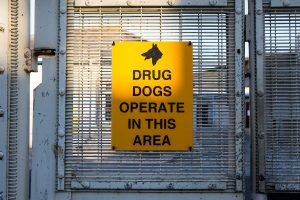New research looked at the reasons why a large cohort (6683) of South London heroin users ended up in hospital or dying. The study: “Causes of hospital admission and mortality among 6683 people who use heroin: A cohort study comparing relative and absolute risks” by Dan Lewer, Emily Tweed, Robert Aldridge and Katherine Morley is published in the current edition of Drug and Alcohol Dependence.
The study
The researchers used data from the Clinical Records Interactive Search resource at the South London and Maudsley NHS Foundation Trust Biomedical Research Centre. This is a research repository of anonymised records derived from the electronic health record system of a mental healthcare provider in South London, England. The study population was 6833 patients aged 18–64 entering community-based treatment for heroin dependence between 1 January 2006 and 31 March 2017. Patients were linked using NHS number, date of birth, sex and postcode to inpatient hospital admissions data from the national Hospital Episode Statistics for England database, and to mortality data from the Office for National Statistics. Linkage was conducted by NHS Digital, a public sector statistical agency. Linkage for hospital admissions was conducted until 31 March 2017 and for mortality until 31 January 2019.
Most people in the study population were aged 25–44 and three-quarters were male, reflecting the demographics of patients entering treatment for opiate dependence nationally. The majority of patients (72%) used crack cocaine as
well as heroin. Use of alcohol, cannabis, and benzodiazepines was also recorded for more than 10% of patients. One in three reported injecting during follow-up, though this is likely to be an under-estimate because patients may not want to disclose injecting while they are prescribed opiate substitution therapy.
Context
People who use illicit opioids such as heroin have high rates of mortality and illness. In England, people identified as dependent on opiates by drug treatment and criminal justice services have a six-fold increased risk of death. There are fewer studies of illness in this population, with most focusing on blood borne viral infections and mental health problems.
Although drug overdose is often found to be the largest single cause of death among people who are dependent on illicit drugs, it usually accounts for less than half of deaths overall. Available data suggests cardiovascular disease, respiratory disease, and liver disease also cause many deaths among people who use drugs, and account for an increasing proportion as age increases. Although these conditions are common in the general population, their contribution to excess morbidity and mortality among people who use illicit drugs is unclear.
People who are dependent on illicit drugs have extremely high relative risks of overdose, hepatitis C, HIV and mental health problems. Some diseases have become specifically associated with illicit drug use, including hepatitis C in many high income countries. Treatment and harm reduction initiatives to improve health among people who use drugs have focused on these areas. In contrast, conditions such as cardiovascular disease, which may cause greater absolute morbidity and mortality yet have lower relative risks because they are common in the general population, have received less attention.
The graphic below shows the causes of death and hospital admissions for the 6,683 people followed up in this study.
Findings
Patients were followed up for an average of 9.4 years in terms of death statistics. 732 individuals died, 621 more than would have been predicted for a cohort with the same demographics but who were not dependent drug users. Of the 621 excess deaths, 260 (42%) were drug-related and 361 (58%) were due to other causes. Digestive diseases caused the most excess deaths (97), followed by respiratory disease (58) and external causes (46). The largest subcategories were liver disease (75), COPD (45) and accidents (30).
Patients were followed up for an average of 7.7 years in terms of hospital admission statistics. There were 21,494 hospital admissions, 14,668 more than would have been expected for this group had they not been dependent opiate users. Of the 14,668 excess admissions, 3042 (20.7%) were drug-related and 11,790 (80.3%) were primarily related to other causes. Mental and behavioural disorders caused the most excess admissions (2055), followed by digestive diseases (1940) and external causes (1685). The largest subcategories were mental and behavioural disorders due to
alcohol (1060 excess admissions), COPD (812), head injury (612), and diseases of the oral cavity, predominantly dental caries (516).
Conclusion
This is an interesting piece of research which confirms that heroin users have extreme risks of hospitalisation and death but also found that the causes for this are mainly related to common non-communicable diseases. The researchers’ use of ‘excess events’ shows the breadth of important diseases in this group, in contrast to just the drug-related risks of blood-borne viruses and mental health problems.
The analysis of premature deaths highlights the importance of digestive, respiratory and cardiovascular diseases, and external causes such as accidents. Similarly, the analysis of hospital admissions shows that the excess burden of non-communicable diseases is four times greater than for drug-related conditions, and particularly highlights the importance of liver disease, COPD, dental caries and head injuries.
The main message from this research is that we need to broaden out our harm-reduction work with heroin users much wider than focusing on the risks of injecting, overdose and mental health.








2 Responses
Are there any calculation in terms of deaths related to both overdose and / or suicide? I have a good friends whose son has been hooked onto “H” for years and they have tried everything even keeping him in prison for tasks he did in an attempt to fund his habit.
As soon as he came out back onto the ol’e drug train. At this point until he hits rock bottom there is nothing that can be done and I am afraid he will die from an overdose.
Hi Jeff, very sorry to hear your story about your friends’ son. Of course overdose/suicide are a big risk, particularly shortly after release from prison. Your friends might want to look into getting naloxone from their local drug treatment centre if they have contact with their son, this can reverse an opiate overdose. Although full blow opiate dependency can last for years and feel hopeless, very many people do eventually turn their lives around.
Good luck
Russell